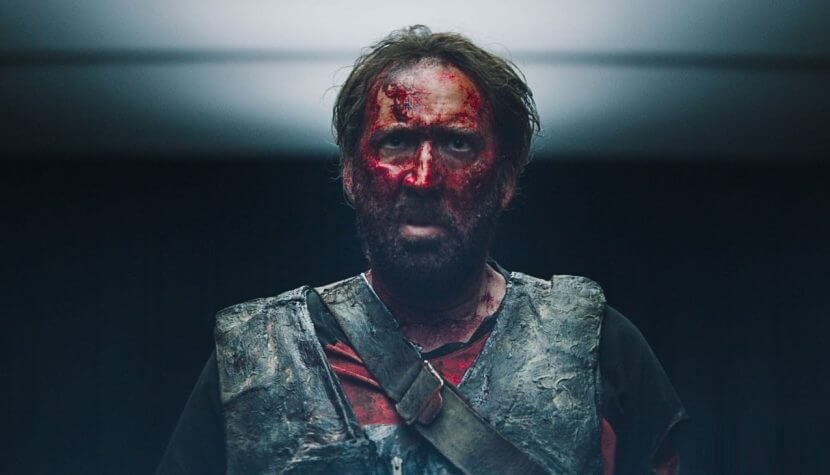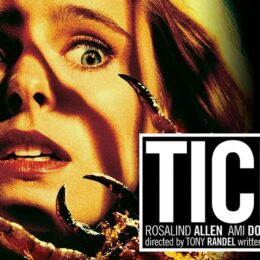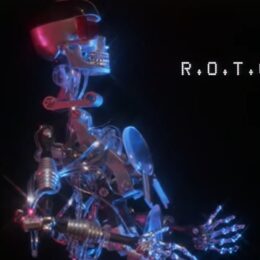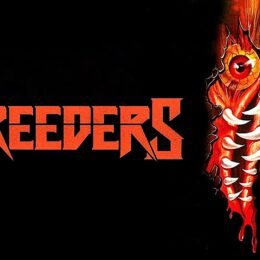MANDY. Nicolas Cage’s Bloody Revenge

WARNING – THIS TEXT CONTAINS SPOILERS
Do you remember the sentimental, melodic hit “Mandy” by Barry Manilow? It went something like this: Oh, Mandy, well, you came and you gave without taking but I sent you away, oh, Mandy, well, you kissed me and stopped me from shaking and I need you today. Now imagine that there’s a Manilow, but his Mandy didn’t leave because of his stupidity; she was abducted by a gang of acid and cocaine-fueled, unfulfilled musicians who look like Connan Mockasin and speak like Lurch from the Addams Family. Then she’s used and burned alive for her defiance. Manilow, in sorrow and desire for revenge, forges a battle axe like something out of a Manowar album cover and embarks on a path of vengeance, becoming something like Ash from Evil Dead and battling creatures akin to those from Hellraiser. And that’s Mandy – a film, not a song.
Anyone who saw Panos Cosmatos’ previous film, Beyond the Black Rainbow, probably either fell in love with it or felt nauseated. And even if someone felt nauseated, they’ll likely admit that visually, the work was at least intriguing. Eight years later, the director returns with an even more finely crafted and original piece. It’s no surprise that the production took so long – although I have serious suspicions that the author wrote the script back in high school, between smoking joints and late-night Jefferson Airplane music video marathons. Finding funding for such a work is a completely different conversation than seeking funds for a new biographical film starring Tom Hanks. Cosmatos takes risks, goes his own way, has his own style and vision for cinema, which he proves for the second time. However, Mandy, instead of demonstrating directorial progress, reveals only limitations and shortcomings hidden behind the Greek’s craftsmanship and concept. But let’s break it down.

The opening is a masterpiece. The scene of cutting down the forest (symbolic) with the accompaniment of King Crimson sends shivers and tantalizes the senses. In short, it works. When the exhausted Nic Cage enters the frame with a chainsaw, we already know it’s going to be good. Then the Crimson music fades, Cage returns home, and the titular Mandy appears. For a few minutes, we watch their idyllic reality woven from stardust. The characters look like the last people not only on Earth but in the entire universe. In love and absorbed in each other, they live in a wonderful wooden cottage, under a sky of green and purple, a ribbon of stars and distant galaxies blessing them and bombarding them with the impenetrable energy of photons. Yes, it all looks stunning, but the dialogues are unbearable. These conversations, like something from late Stachursky lyrics, are both in place and out of place, but I understand their poetic value. It doesn’t matter that after Mandy’s next words, I’d rather wrap myself in a TV cable – I know we’re dealing with an ethereal, otherworldly heroine.
Then we meet the antagonists. A gang reminiscent of the Manson Family. Drugged, aging hippies on the border between reality and dreams turn out to be bloodthirsty, lustful beasts, collaborating with a motorbike gang of sadomasochists. Their leader falls in love with Mandy and decides to possess her. In a painfully long and senseless monologue, we get to know his ego, which turns out to be astronomically – literally – huge. After a few minutes of boredom and senseless rambling, the leader tells the girl that she will be his concubine. Mandy refuses, so the gang ritually burns her in front of her lover. And that’s how the first hour of the film goes. Little substance, but explosive, acid-induced, and dreamlike form. You can immerse yourself – and fall in love. When the death dance fades with its final beat, things get a bit more normal. Cosmatos comes back down to earth, tones down the fluorescent colors, smears Nic Cage with blood, hands him a crossbow and an axe, and sets him on the path of revenge, which unfolds through a sequence of increasingly elaborate enemy eliminations. Cage, like a video game character, reaches the final boss, crushes his head, and then returns home, and the film ends.

Related:
This final crushing is as symbolic as the beginning of the film – cutting down the forest – and both scenes serve as a kind of narrative bracket. The film’s essence is roughly this: it will show you how a guy slaughters enemies with a chainsaw, but it will show you in a way that your head will be crushed. Because beyond the exploitation of violence and a few original visuals, “Mandy” has nothing to offer. The first half is exhausting but intriguing, while the second is somewhat satisfying. Cosmatos discards all narrative complexities, doesn’t bother with character development, neglects technical finesse, or even cohesive fight scene editing. He rushes forward like his protagonist, ticking off shocks, repulsiveness, and oddities on his list.
This artistry, however, works quite well. The individual components of the film reek of staleness, but Cosmatos sprays them with glitter and somehow arranges them into a whole that is more than just the sum of its parts. So don’t be deceived by the form: Mandy is not anything original, in fact, it’s a step back in terms of revenge cinema tropes, but its charisma, audacity, unbridled energy, and eccentricity make up for its evident shortcomings. For Nicolas Cage fans, it’s a must-see. From the moment his character, battered from a battle with a latex “monster,” takes a break and snorts an enormous amount of cocaine that nearly fills the room, a wide smile appeared on my face, which didn’t fade until an hour after the film ended. For a while, I had a taste of something unconventional, but the further I got from the screening, the more Mandy appeared to me as an average horror in an extraordinary presentation, a film that no one will remember in two years.





